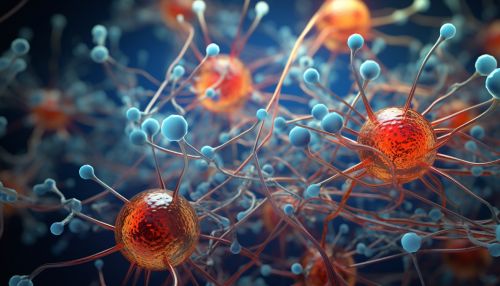The Role of MicroRNAs in Gene Regulation
Introduction
MicroRNAs (miRNAs) are a class of small, non-coding RNA that play a crucial role in the regulation of gene expression. They are involved in a wide range of biological processes, including development, cell differentiation, proliferation, and apoptosis. This article will delve into the role of microRNAs in gene regulation, exploring their biogenesis, mechanisms of action, and their implications in health and disease.


Biogenesis of MicroRNAs
MicroRNAs are transcribed in the nucleus by RNA polymerase II or III into primary miRNAs (pri-miRNAs). The pri-miRNAs are then processed by the RNase III enzyme Drosha and its partner DGCR8, a process known as cropping. This results in the formation of precursor miRNAs (pre-miRNAs), which are approximately 70 nucleotides in length and have a hairpin structure.
The pre-miRNAs are then exported to the cytoplasm by the nuclear transport receptor Exportin-5. In the cytoplasm, the pre-miRNAs are further processed by another RNase III enzyme, Dicer, to generate mature miRNAs. These mature miRNAs are then incorporated into the RNA-induced silencing complex (RISC), where they guide the complex to target mRNAs.
Mechanism of Action
MicroRNAs regulate gene expression by binding to the 3' untranslated region (3' UTR) of target mRNAs. This binding can lead to either mRNA degradation or translational repression, depending on the degree of complementarity between the miRNA and its target mRNA.
In animals, miRNAs usually have imperfect complementarity with their target mRNAs, which leads to translational repression. This is achieved by inhibiting the initiation or elongation steps of translation, causing mRNA deadenylation and decapping, or sequestering mRNAs into P-bodies, where they are stored or degraded.
In contrast, in plants, miRNAs often have perfect or near-perfect complementarity with their target mRNAs, which leads to mRNA degradation. This is achieved through a process known as RNA interference (RNAi), where the miRNA-guided RISC cleaves the target mRNA at the site of miRNA binding.
Role in Health and Disease
MicroRNAs play a critical role in maintaining normal physiological processes. They regulate a wide range of biological processes, including cell differentiation, proliferation, apoptosis, and immune response. Dysregulation of miRNA expression can lead to various diseases, including cancer, cardiovascular diseases, and neurological disorders.
In cancer, miRNAs can act as either oncogenes or tumor suppressors, depending on the function of their target genes. For example, miR-21 is overexpressed in many types of cancer and promotes cancer progression by targeting tumor suppressor genes. On the other hand, let-7 is downregulated in cancer and acts as a tumor suppressor by targeting oncogenes.
In cardiovascular diseases, miRNAs are involved in regulating cardiac development, function, and response to stress. For example, miR-208a is involved in cardiac hypertrophy and heart failure, while miR-133 regulates cardiac muscle differentiation and proliferation.
In neurological disorders, miRNAs are involved in neuronal development, synaptic plasticity, and neurodegeneration. For example, miR-134 regulates dendritic spine development, while miR-29 is involved in Alzheimer's disease by regulating BACE1, a key enzyme in the production of amyloid-beta.
Future Directions
The study of microRNAs in gene regulation has opened up new avenues for understanding the complex regulatory networks that govern cellular processes. Moreover, the involvement of miRNAs in various diseases has highlighted their potential as therapeutic targets and diagnostic biomarkers.
However, there are still many challenges to overcome. For example, the identification of miRNA targets is a complex task due to the imperfect complementarity between miRNAs and their target mRNAs. Moreover, the functional consequences of miRNA-target interactions are often context-dependent, adding another layer of complexity to their study.
Despite these challenges, the field of miRNA research continues to grow and evolve, promising to shed light on the intricate mechanisms of gene regulation and to provide new strategies for the treatment of diseases.
